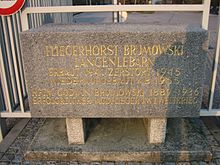Austrian Air Force
The Austrian Air Force in its current form was created in May 1955 by the victorious Allied powers, subject to restrictions on its use of guided missiles.
Pilot training started out with four Yak-11 Moose and four Yak-18 Max aircraft donated by the Soviet Union, and Austria purchased further light trainer types under the Military Assistance Program.
From 1970, Austria purchased a total of 40 Saab 105 lightweight multi-role aircraft with the intention to deploy them in trainer, reconnaissance, interception and ground attack roles.
The helicopter fleet includes Agusta-Bell (AB) 204s (mainly used for medical evacuation), AB-206s (training and liaison), and AB-212s (used by air-mobile troops and for light transport).
The Eurofighter purchase was subject to controversy in Austria, and became a political football for some time, but the 15th and final aircraft was delivered on 24 September 2009.
In July 2017, as a result of the ongoing controversy, the Austrian Ministry of Defense announced the phasing out of the Typhoon starting 2020, and its replacement by a "militarily more effective and more cost-efficient" air surveillance system.
The school is under direct command and control of the Ministry of Defense and controls two flying units: After 50 years of service the Austrian Air Force has retired without replacement its Saab 105OE aircraft in January 2021 and has disbanded its Jet Trainer Squadron (Düsentrainerstaffel) at Linz - Hörsching Air Base, which has operated the type.
After the war the USAAF used the base, then named "Camp McCauley – Hörsching" and housing displaced persons,[13][14][15] until 1955 when it was returned to the Austrian government.
After the war the base was briefly occupied by Soviet troops before it was taken over by the USAAF, becoming "Air Force Station Tulln – Vienna".
The first Austrian aircraft to arrive were Yak-11 "Moose" and Yak-18 "Max-A" trainers donated by the Soviet Union and Agusta Bell AB47G2 helicopters in late 1955.
The base is the headquarters of the Luftunterstützungsgeschwader (Air Support Wing); it also houses the Bundesfachschule für Flugtechnik (Federal School for Aeronautical Engineering) and Fliegerwerft 1, responsible for overhauls and maintenance of the Pilatus PC-6 B2H2 Turbo Porter, S-70A-42 Black Hawk and OH-58B Kiowa.
Fliegerhorst Hinterstoisser, located north of Zeltweg in a region known as Aichfeld, was built as a base for the Air Force of the Ständestaat 1936–1938.
The base also houses parts of Fliegerwerft 2, responsible for overhauls and maintenance of the Saab 105Oe and the Pilatus PC-7 Turbo Trainer, as well as flight school for basic training.
Hochgebirgslandekurse (Alpine landing courses) are conducted at least annually at the base, with officers of foreign air forces as regular attendants.
The base was close[specify] to the Wiener Neustädter Flugzeugwerke (WNF) factory[16] in the eastern part of the city[citation needed] and which manufactured Messerschmitt Bf 109s and repaired Junkers bombers and destroyers during World War II.
The large Liechtenstein Kaserne on the northern edge of the Truppenübungsplatz Allentsteig (Training Area, Gunnery and Bombing Range) is home to a detachment of Flight Regiment 1's OH-58B Kiowas.
Besides that, Flight Regiment 1's helicopters and PC-6 B2H2 Turbo Porters are operating from the base or its adjacent meadows and roads on a regular basis.
The Frundsberg Kaserne in the southern suburbs of Schwaz east of Innsbruck houses a detachment of Flight Regiment 2's AS-316B Alouette IIIs used for SAR and firefighting duties.
[10][17] This radar site is located atop the Kolomannsberg (1,114 m) on the border between Salzburg and Upper Austria north of Thalgau in a region known as the Flachgau.
Initially a French CSF (now Thales Group) RV376 and a British Marconi (now BAE Systems) S244 height finder were used at the site but were replaced by an Italian Selenia (now Alenia) RAT-31S 3D-radar in 1983.
The site is active since 1986, with its construction and commission severely hampered by the bad weather in the region (partly due to the height above SL) and problems with the radom[check spelling] and the radar itself.
[20] As a backup to the fixed sites and to create a better situation image in times of crisis two Selenia (now Alenia) MRCS-403 3-D radars – mobile versions of the RAT-31S – are operated by the Radarbataillon since 1979.
To provide detection of low-flying aircraft the Radarbataillon operates six Thomson-CSF (now Thales Group) RAC 3D medium-range 3-D radars – designated TER Tieffliegererfassungsradar – mounted on ÖAF 32.403 trucks beginning in 1998.
They are used in conjunction with the so-called ZZR (Zielzuweisungsradar), 16 Thomson-CSF (now Thales Group) RAC 3D medium range 3-D radars in target designation configuration which were purchased in 1998.







